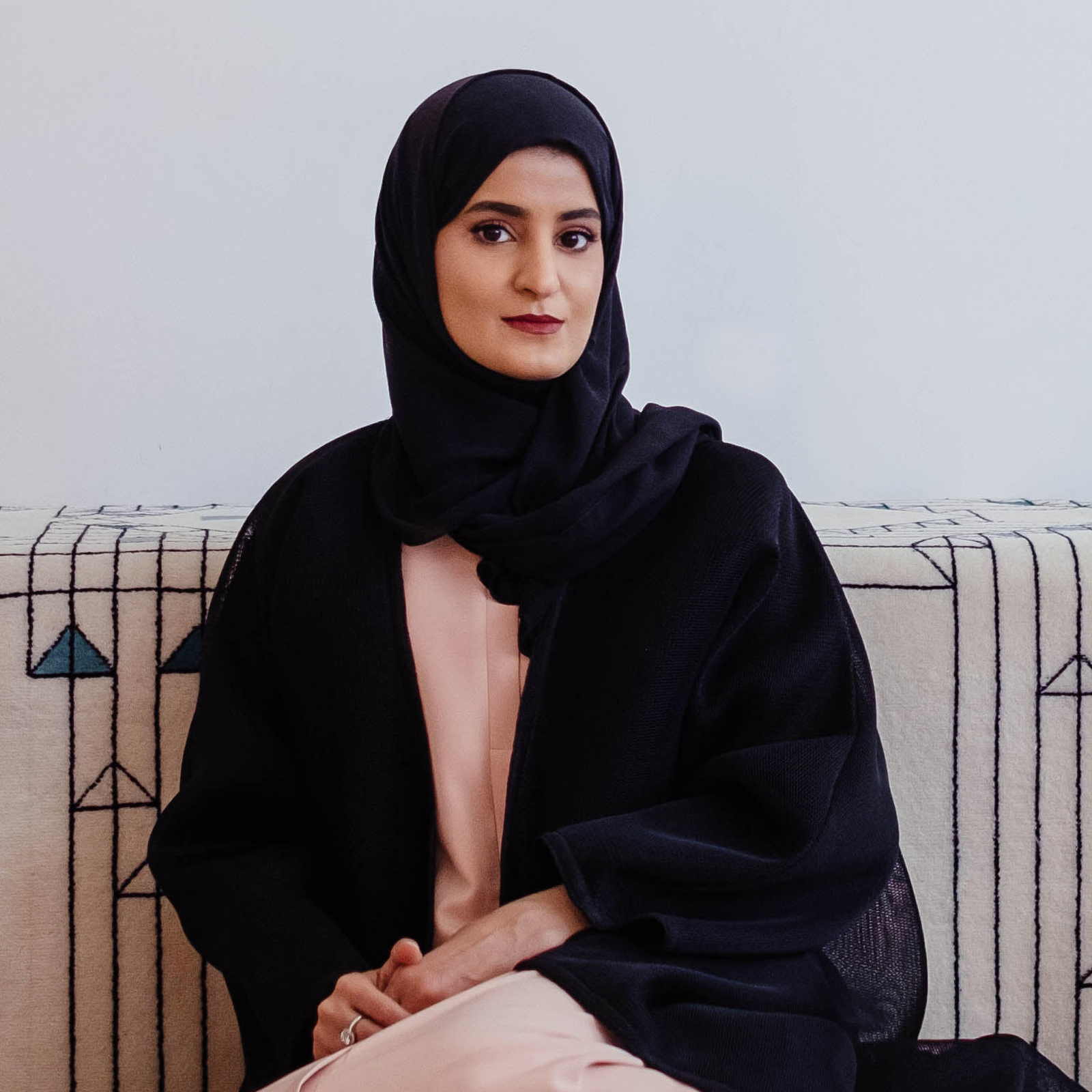We are honored to chat with this Emirati gem, Aljoud Lootah is an Emirati designer who has gained international acclaim, particularly after the establishment of her studio in 2014. Since its foundation, the studio has preserved its unique approach by focusing on the idea of contrasts in form and function while distinctly interpreting the Emirati culture and artisanal techniques through contemporary design.
1. The way you have valued Emirati traditions and merged it with contemporary designs and techniques to create such unique products is inspiring, when did you discover your talent and decide to pursue product design?
In 2012 I enrolled in a program by Tashkeel and Dubai Culture (currently called Tanween by Tashkeel). During the program, the designers (3 in total) were asked to design a product that would be displayed at Design Days Dubai 2013. Although I come from a graphic design background, there was something about product design and 3D objects that made me reconsider my career path. I had a change of heart and decided to focus on product design.
2. There is no question that you have taken locally designed products to the next level, with attention to quality, detail and craftsmanship…how important is this to you?
Paying attention to the quality of a product adds more value to it. We believe that this aspect should not be taken lightly as the high quality is a reflection of our brand image and I believe it talks so much about the brand as well.
We always want to be associated with high-end, quality work, especially that our products tell stories of who we are as an Emirati brand and those stories are shared with the whole world
3. From all the works that you have executed, what is one that you feel most connected to?
It is very hard to choose one product. I always have a connection with an element of each project we take on board and design. However, I believe that the Takya stools and benches are the ones that reflect who I am the most. There is something very refined about them – from their minimalistic design combined with their playful nature, to their fun inspiration and the fact that they are quite versatile is what connects me to this collection the most. It is a true reflection of my history and childhood
4. What is your favorite time of day?
Early mornings are the best. It is the time where I feel at peace and ideas flow in a clearer way than the rest of the day.
5. With Dubai being one the biggest design hubs, what would you want the world to know about the local talents and their impact on design in the region?
We are lucky to be living in a country that focuses on the creative industry and believes that it is playing a big role in the economy. What that being said, we are enabled, we are trusted, and we are provided with many opportunities to thrive. It is our responsibility to ensure that what we produce is a reflection of who we are and should tell our story to the world. Here is where quality and innovation play a big role. They would set us apart.
The awareness around design has increased steadily throughout the past few years and there has been many designers who have emerged due to the support we are receiving from the government.
6. A favorite quote?
My father once said “rules can be bent, but not broken” somehow this quote resonated with me well
7. With every product, there is a story and a history, talk us through your design process for creating the “Jalees” bench?
Jalees is designed to recognize the primitive characteristics of old outdoor benches that were commonly found around the UAE in most Emirati homes, this bench design pays tribute to its minimal structure and physical attributes.
The essential vertical and horizontal wooden planks that were used to construct the old benches have inspired the minimal design of this outdoor bench creating an aesthetically appealing modern interpretation.
Taking into consideration the post-Covid social distancing requirements, this bench creates a flexible seating system for all users.
Contrasting the horizontal octagonal wooden planks are circular seats, marked with “Please Sit Here”, that slide along the length of the bench to create social distancing when needed between strangers. To bring two people together, the seats are able to slide closer, while additional seats can be added or removed from the bench according to the requirements of the user.
Contrasting the wooden material is a playful pop of color, yellow, that is applied on the interior metal structure of the bench for a strong visual aesthetic. The structure is designed with three metal arches to stop the seats from moving further along the bench creating a 1 meter space between seats to respect the social distancing requirements.
Smaller sliding and removable tables are placed between the two seats to provide the users with a space to place their cups of coffee, phones or small personal belongings.
The socially distant thermally modified seating design is a solution conceived as a response to the current situation that is applying restrictions on the way people are coming together. It is an invitation to sit in outdoor public spaces, safely, without the need to feel the restriction of allocated seating spots that are marked with red stickers.
8. What is one piece of advice you would give to young local designers?
To work with passion, and always be committed. It takes so much self-discipline to reach places and achieve certain goals, and without commitment, it wouldn’t work.
9. An item you cannot live without?
My iPad pro! I love it. I design, sketch and take notes on it. It’s been an item that traveled the world with me and helped me immensely throughout my design career.
10. Tell us something our readers might find surprising to learn about you?
I find it very hard to read (books, articles, contracts, anything that is more than a paragraph long!), and I am terrified of dogs. Two very random things but people tend to be surprised when they know this.


